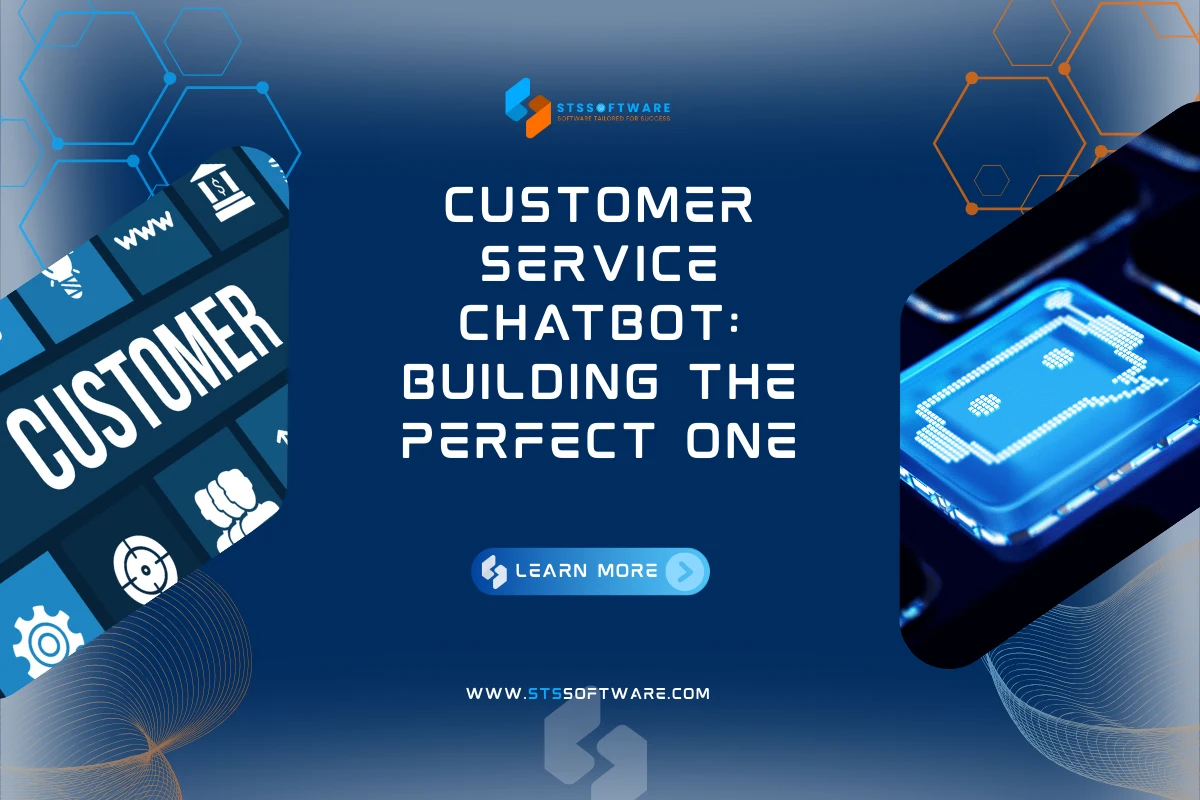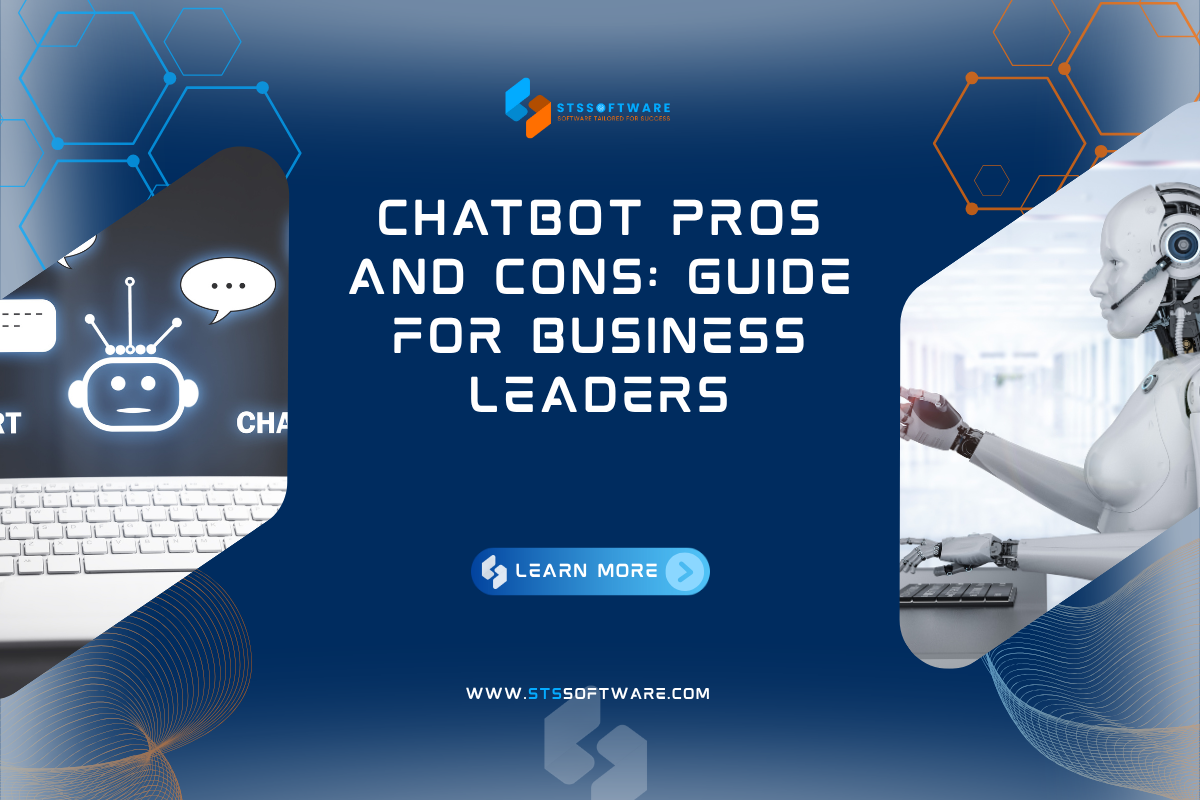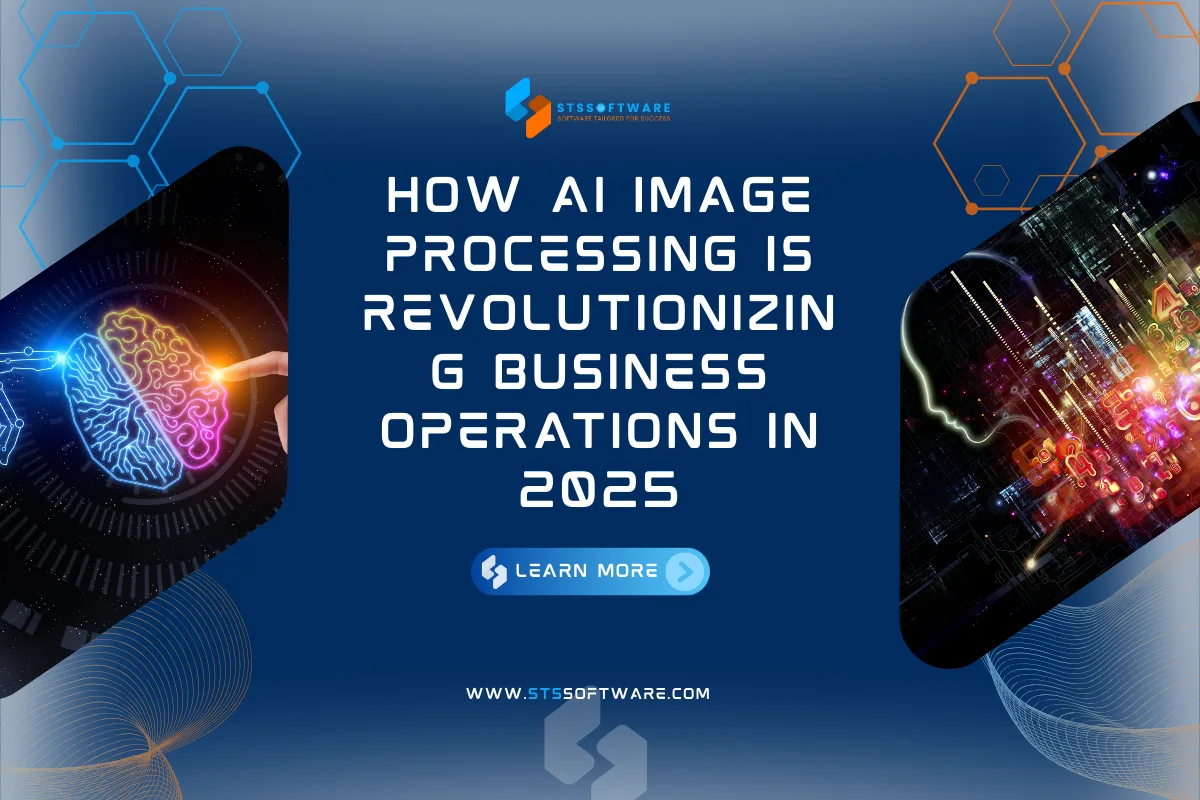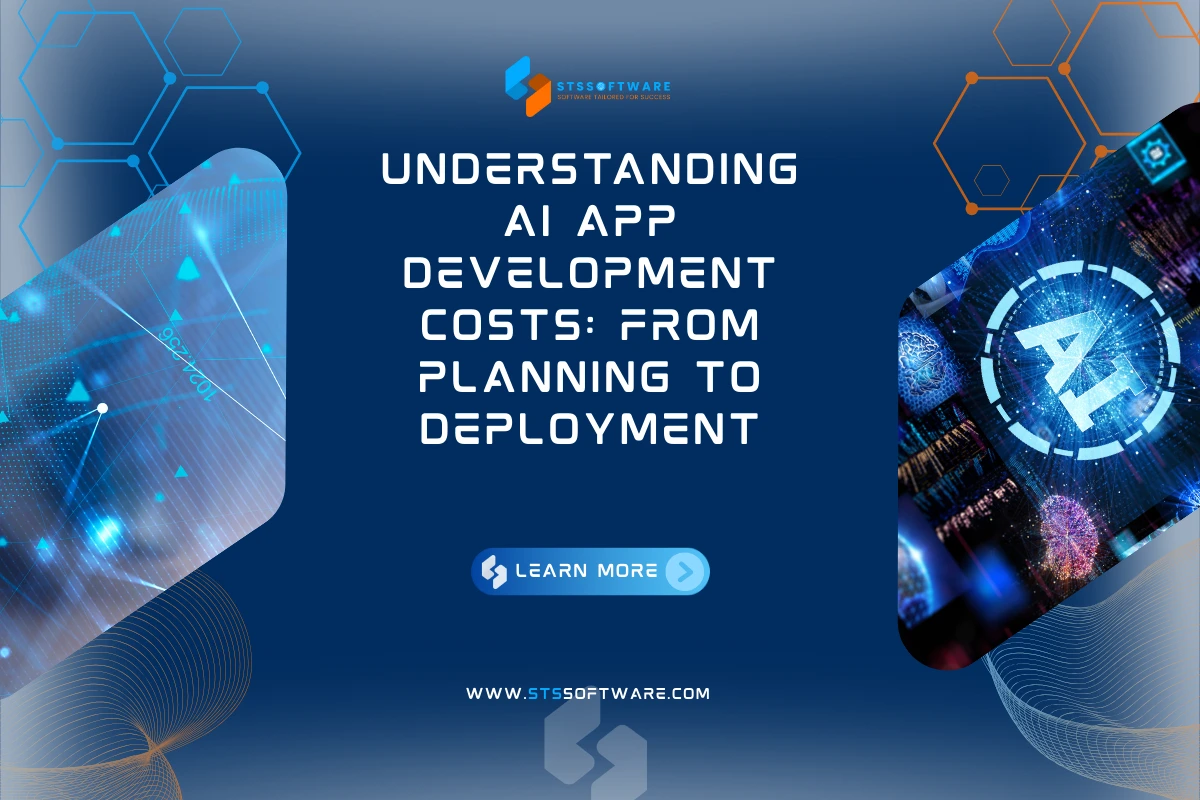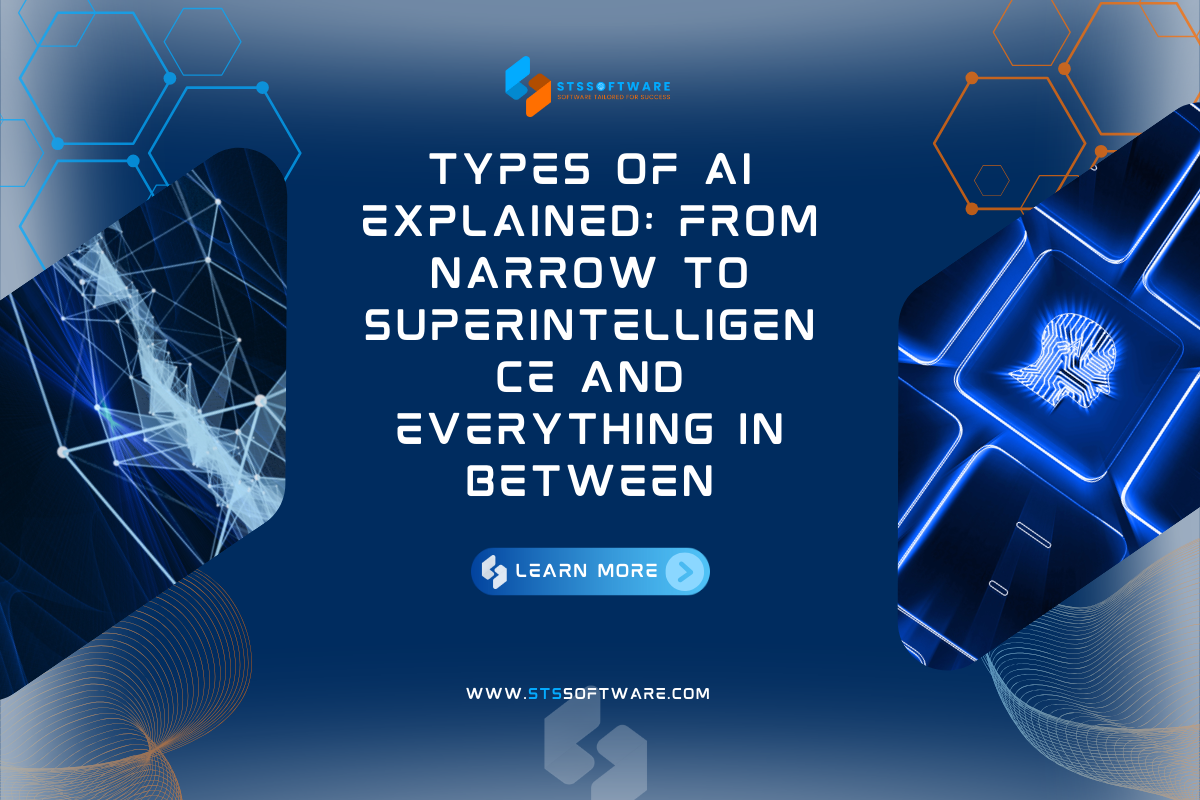Nowadays, customers expect more and more from customer service – from response speed to personalization. This makes it difficult for many businesses to maintain a 24/7 customer support team while still ensuring quality. The solution lies in AI customer service chatbots – a tool that helps automate the support process while maintaining flexibility and friendliness in interaction. In this article, STS Software will explore with you the strategy to build an effective customer service chatbot, helping to improve user experience and optimize business operations.
What is a Customer Service Chatbot and How Does It Work?
Customer care chatbots are automated chat tools that help businesses support customers to answer questions, handle requests or provide information quickly and continuously 24/7. There are two main types: scripted chatbots and AI chatbots. AI chatbots can learn, understand context, and respond flexibly.
The core technology behind modern chatbots includes Natural Language Processing (NLP), helping them understand and analyze user language. Combined with machine learning, chatbots can improve their responses based on real interaction data.
By applying artificial intelligence customer service bots, businesses not only optimize operating costs but also bring a more consistent and personalized service experience to customers.
Key Benefits of Implementing Customer Service Chatbots
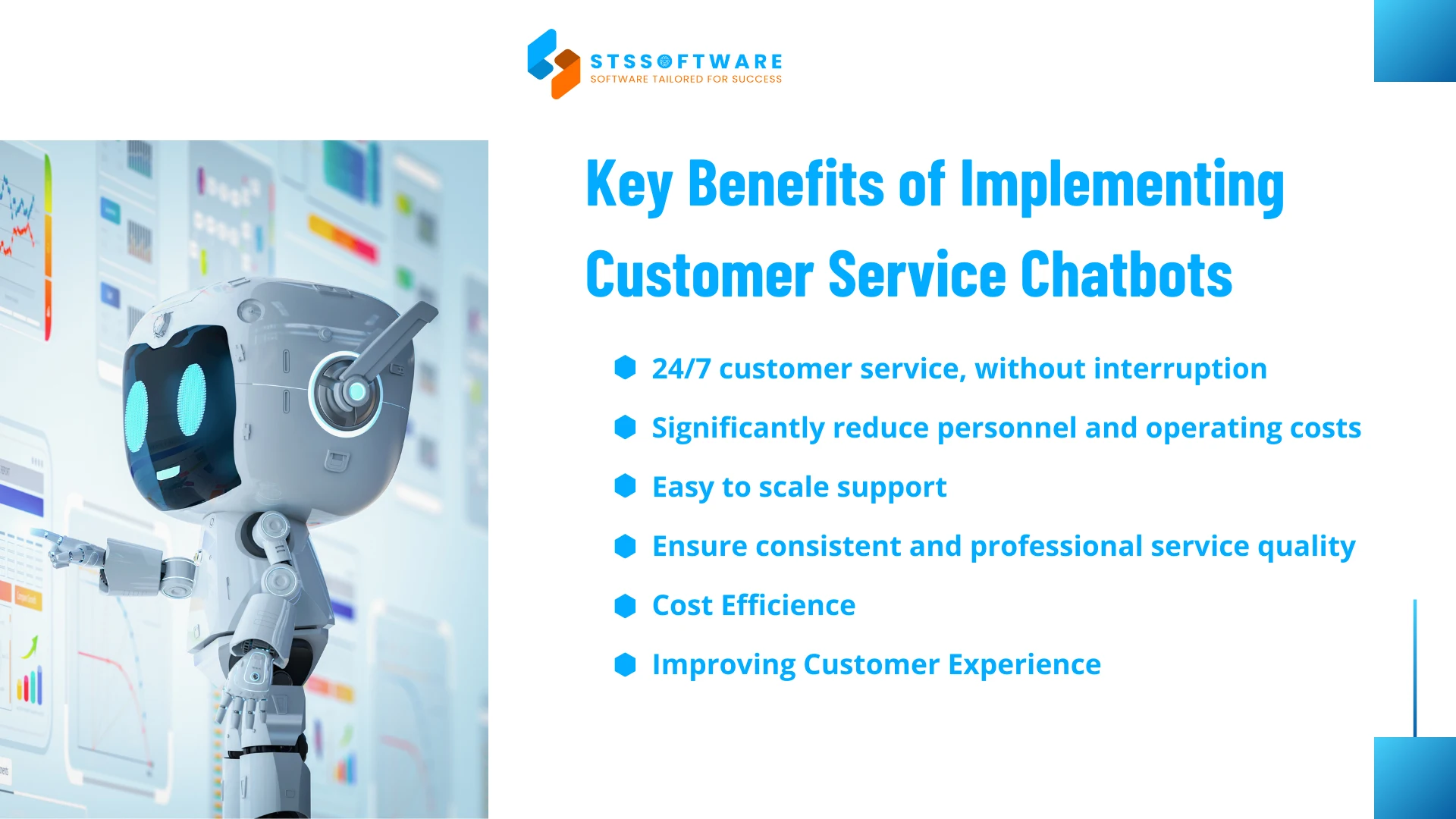
Higher customer expectations and growing demand for multi-channel interaction are driving the rise of customer service chatbots. This trend helps businesses improve operational efficiency and customer care quality. Below are the primary advantages that customer service chatbots would enable:
24/7 customer service, without interruption
One of the major features of a customer service chatbot is that it works 24/7. Whereas normal working staff may be available in hours of work, a customer care chatbot will actually be able to serve customers anytime, whether be day or night including weekends and holidays.
For instance, KLM Royal Dutch Airline introduced the BlueBot chatbot on Facebook Messenger to help customers book tickets and update flight schedules. This made response times faster and served thousands of customers daily.
Significantly reduce personnel and operating costs
AI chatbot customer service reduces the expense of hiring, training and managing customer care team concerning its application. According to Juniper Research, by 2022, chatbots were expected to help businesses save over 8 billion US dollars annually. This saving comes from reducing reliance on human resources.
These customer service chatbots help the businesses in managing multiple requests simultaneously without any enhancement of human resources and they also optimize consolidated long-term cost.
Easy to scale support
Unlike traditional customer care limited by employee numbers, customer service chatbots can interact with thousands of customers simultaneously. They maintain a stable response time without delays. Businesses particularly benefit from this during days when they run many promotional campaigns, shopping festivals, or experience peak times.
For example: Shopee integrated its chatbot system to handle FAQs automatically. It relieved call center agents during super sales periods.
Ensure consistent and professional service quality
Artificial intelligence customer service bots rely on pre-set scenarios or machine learning. Thus, they avoid errors caused by human emotions or inexperience.
Automatically grow and advance, learning with time by an understanding of behavior concerning service quality standards for personalized service.
Sephora has deployed a chatbot to give product recommendations suited to skin types of customers, according to input given; thus, contributing to the increase in conversion rates and customer satisfaction.
Owing to these exceedingly great benefits, customer service chatbots are now increasingly becoming an inseparable part of smart customer care systems, for example, opening many doors for improving business performance, saving costs and improving user experience.
Cost Efficiency and ROI of Customer Support Chatbots
The application of customer support chatbots not only helps improve customer experience but also brings clear financial efficiency to businesses. From reducing operating costs to improving productivity and conversion rates, support chatbots are proving to be an important role in the customer service cost optimization strategy.
Significantly reduce operating costs
It also enables companies to save tremendously on salaries, training, and personnel management. An IBM study states that companies can achieve up to 30% savings in customer care expenses with the introduction of AI chatbots. This is particularly true considering the drawbacks of COVID-19 experiences that necessitate digitization in customer service.
Improve productivity and processing speed
AI customer support chatbots can answer almost at the speed of sound irrespective of time or workload. A human employee can only handle one customer at a time. Meanwhile, customer support bots manage hundreds simultaneously, ensuring both speed and accuracy. H&M is a global fashion retailer and uses AI chatbots to answer general questions, help customers with their personalized shopping. They also help customers with returns and other services. It has greatly reduced the workload to the company customer service team and increased the user experience.
Increase ROI through high performance and scalability
Chatbots not only contribute to cost savings but also to income generation due to better user experience and shorter problem resolution time. Fast, accurate and personalized support dramatically increases retention and conversion rates. According to Juniper Research, chatbots will generate savings of over $11 billion for companies by 2025 in terms of 2.5 billion hours of time saved by businesses
It is thus proved that AI customer support chatbots are considered a wise technological solution for an investment strategy with a potentially very high ROI in reducing costs, increasing productivity and sustaining better customer satisfaction.
Improving Customer Experience with AI-Powered Chatbots
As customers demand speed and personalization, AI-powered chatbots offer an effective solution. They help businesses greatly improve customer experience.
Customer service chatbots can provide instant responses at any time of the day or night, so customers will no longer have to sit in wait as one might at a traditional call center. Not only does the fast response help to fix problems and provide a quick-dedication feeling of service with a touch of professionalism, but it also allows customers to feel valued.
Without stopping at speed, customer service AI can also personalize the experience of every user because it remembers the history of interactions and analyses the data on user behavior. Thus best chatbot service for customers may automatically recommend suitable products, followed by order history reminders or support in the return process according to specific needs of every customer.
Apart from this, service quality is always stable. It does not depend on the mood or expertise of customer service staff. Thus this not only helps build a professional image for a business but also encourages higher customer satisfaction and retention rates.
In short, customer service chatbots are not just a support tool but also an “intelligent virtual assistant” that helps businesses establish long-term and sustainable relationships with customers.
Essential Features of Effective Customer Service Chatbots
A modern chatbot must do more than answer basic questions. It needs advanced features to serve both customers and businesses.
A customer service chatbot must have NLP capabilities from the start. This allows it to understand user speech and respond warmly. This is a crucial factor that determines the level of customer satisfaction in any interaction.
Next, the customer support chatbot should be omnichannel, allowing seamless operation across multiple channels like the website, Facebook Messenger, Zalo, WhatsApp, or even mobile applications. This way, wherever a user requires assistance, they will have that convenience.
Another key feature is analytics-the ability to collect statistics and analyze user data. This is important for monitoring the performance of the chatbot, identifying areas for improvement, and actively engaging in the optimization of the entire customer care journey.
Finally, for it to function well as a customer service chatbot, its design must support integration with already-existing systems-such as a CRM, order management systems, or marketing automation-thus continuing the customer care service unobtrusively in the business technology ecosystem.
Considering all the above factors, businesses can use AI chatbots not only for support but also as a strategic tool to enhance customer experience and operational efficiency.
Implementing a Customer Service Chatbot: Step-by-Step Guide
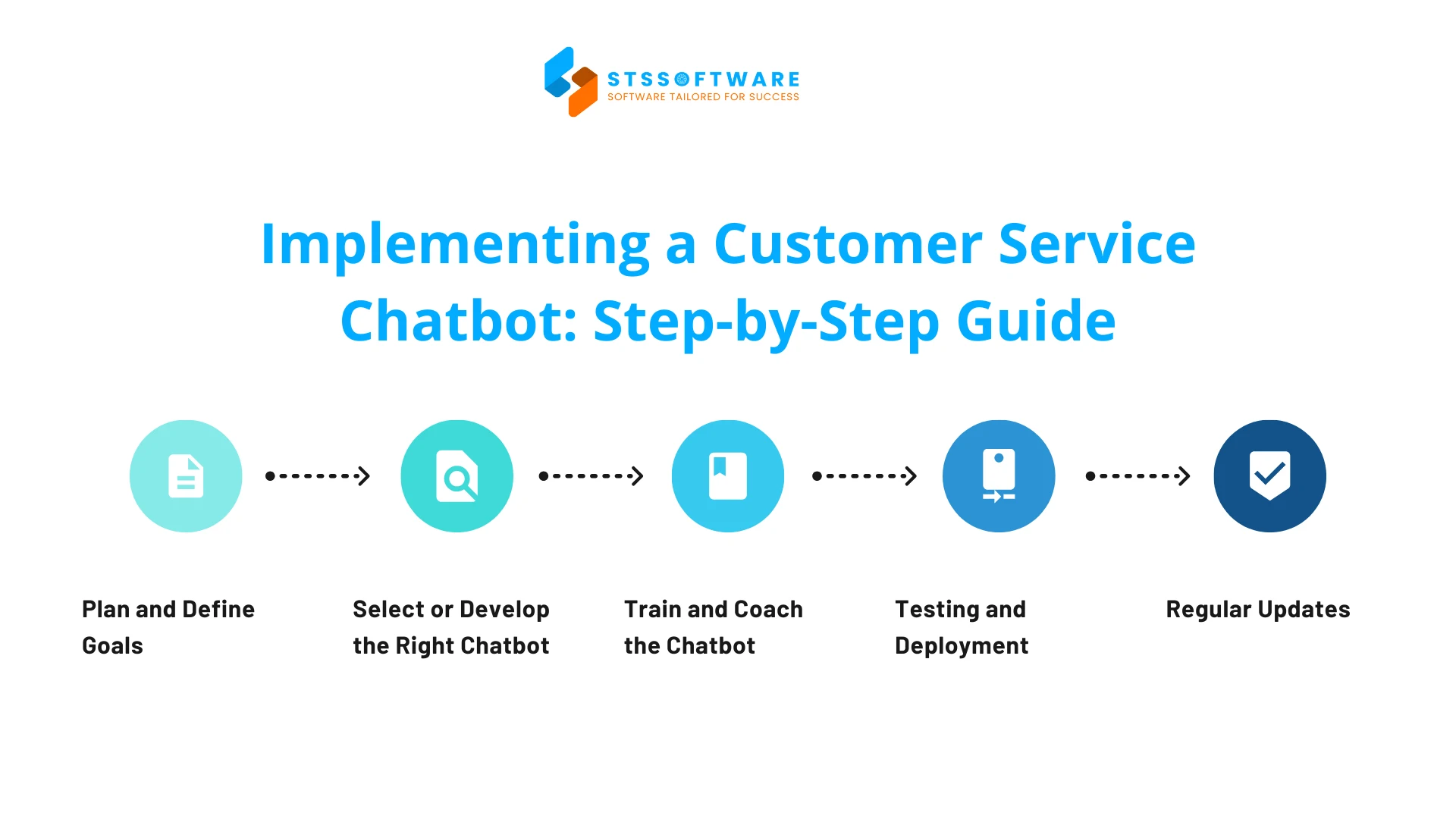
Implementing an AI customer service bot would significantly benefit your business, yet for effective implementation, a clear roadmap must be designed. These are the different way stepwise methods for the implementation of a customer service bot in order to work for you:
- Plan and Define Goals: For starters, businesses need to set clearly the goal of deploying the bot – to reduce staff load, enhance customer experience, to cut down on operational costs. Defining the right goal will steer the whole process as a roadmap.
- Select or Develop the Right Chatbot: According to certain defined needs, businesses can either buy an off-the-shelf solution or cooperate in developing a custom AI chatbot for customer support. This guarantees the seamless integration of the chatbot into other existing systems.
- Train and Coach the Chatbot: This is a very important stage when it comes to AI chatbots for customer services; developers “teach” the chatbot the language of the industry, enabling it to deduce user intent through machine learning and NLP.
- Testing and Deployment: Before actual deployment, the chatbot is put into a limited testing environment for error detection, response tweaking, and optimization of use cases.
- Regular Updates: After the chatbot goes live, it should be continuously monitored for performance, updated with new data, and enhanced to handle complex queries; such factors are key in making or breaking a customer care chatbot.
Common Challenges and Solutions in Chatbot Implementation
There are many obstacles that businesses may encounter when implementing chatbots in customer service. Here are some common challenges and practical solutions:
- Lack of Quality Training Data: An effective AI chatbot in customer service needs real data to learn and respond accurately. The solution is to combine data from real conversations, customer care tickets, and customer feedback to train the bot.
- Not being able to Integrate with Existing Systems: This is a common problem when businesses use old CRM systems or discrete software. The solution is to choose a support chat bot that has API expansion and supports cross-platform connectivity.
- Difficulty Handling Complex Queries: Situations that go beyond the script make it easy for chatbots to give incorrect answers. To solve this, businesses should clearly combine chatbot use cases for customer service and allow chatbots to forward cases to employees when necessary.
- Users are not Ready to Accept Chatbots: The fear of using robots can make customers hesitant. The solution is to personalize the chatbot, making the responses more natural and creating a friendly sense of interaction.
Real-World Success Stories: Customer Service Chatbot Case Studies
The application of chatbots in customer care is not only a trend but also brings clear efficiency to many businesses around the world. Below are some typical chatbot customer service examples illustrating the true potential of this technology.
KLM Royal Dutch Airlines – Global Customer Support Chatbot
In its customer service sector, KLM Royal Dutch Airlines employs the AI-Enhanced Chatbot BlueBot on Facebook Messenger. It helps customers obtain swift and accurate feedback for inquiries. This chatbot handles ticketing information, informs customers of flight changes, and answers frequently asked questions about baggage or check-in.
Results achieved:
- Handle more than 50% of customer requests without having to transfer to staff.
- Reduce average response time from 30 minutes to 5 minutes.
- Improve customer satisfaction by more than 87%.
HDFC Bank (India) – EVA Chatbot for Financial Support
EVA is a call center chatbot using AI and NLP. It provides product information and helps users query accounts on the bank’s website. After just 6 months, EVA has made its mark as one of the best AI chatbots for customer service in the Indian financial industry (HDFC EVA Bot Success Report).
Results achieved:
- Received more than 2.7 million conversations with customers in the first year.
- Response accuracy rate reached 85%, saving hundreds of thousands of USD in operating costs each quarter.
- Operates 24/7, supports both desktop and mobile apps.
Sephora – Personalized Beauty Experience via Chatbot
Sephora uses chatbots on Facebook Messenger and its website to advise on skincare products. They also recommend cosmetics and schedule makeup appointments. This is a typical chatbot customer service example for the beauty retail industry.
Results achieved:
- Conversion rate increased by 11% via chatbot channel.
- Customers spent longer chatting, higher satisfaction level compared to traditional support.
- Experts consider chatbots as one of the most user-friendly and effective call center solutions in the cosmetics industry.
The above examples show that when deployed properly, AI chatbot call centers can not only replace but also upgrade the entire customer care system. Businesses need to carefully consider these practical chatbot customer service examples to choose the best AI chatbot for customer service that suits their own needs.
Future Trends in Customer Service Chatbot Technology
AI customer service bot technology is constantly evolving, bringing many breakthroughs to help businesses optimize customer experience. In the coming years, the following prominent trends are predicted to shape the AI customer service chatbot market:
- Voice Communication Capabilities: Chatbots are not only limited to text but can also interact by voice thanks to NLP technology and voice recognition. This will help AI chatbots for customer service become more natural and accessible.
- Sentiment Analysis: AI support bots will recognize customer moods during conversations. They adjust their tone, being gentle or concerned as needed.
- Deep Integration with Business Systems: Businesses are increasingly integrating chatbots directly into CRM, ERP, or sales platforms to quickly process requests, retrieve real-time data, and make instant decisions.
- Predictive Behavior and Proactive Support: Instead of just reacting, chatbots will now be able to predict customer needs, recommend products/services or give advice before users need to ask.
The combination of these new technologies will help kunden service chatbots become more than just a support tool, but a true “smart virtual employee” in modern customer care strategies.
Why Choose STS Software as Your Partner for Customer Service Chatbot Development
In the context of businesses increasingly focusing on user experience, choosing a highly specialized AI development company is a key factor to effectively deploy customer service chatbots. STS Software is proud to bring flexible AI chatbot customer support solutions, customized to each specific need.
- Deep Expertise in AI and Service Automation: STS Software owns a team with rich experience in building AI customer service chatbots applying NLP, machine learning and user behavior data analysis, helping businesses handle thousands of requests every day while still ensuring high accuracy.
- Tailor-made Development: Instead of applying mass solutions, STS Software provides custom software development services, ensuring that chatbots are fully compatible with internal processes, brand culture and business goals.
- Proven Success: Many STS Software customers have successfully deployed AI support chatbots, recording a reduction in customer care center load by up to 50%, while significantly improving CSAT and response time.
STS Software is not just a technology provider – we are a companion, always committed to supporting customers to optimize care operations and build outstanding customer experiences with modern AI customer service chatbots.
Conclusion
Customer service chatbots are no longer a temporary trend, but have become an indispensable part of the customer care strategy of modern businesses. Chatbots for customer service can respond instantly, personalize experiences, and operate 24/7. They help optimize costs, improve efficiency, and increase customer satisfaction.
In the context of constantly developing technology, applying AI chatbot customer support is a strategic step to maintain a competitive advantage. To deploy successfully, businesses need a partner with expertise and business understanding. STS Software is always committed to providing that
Contact STS Software now for advice and development of the most suitable customer service chatbot solution for your business – from feature design to actual implementation, ensuring efficiency and scalability in the future.



